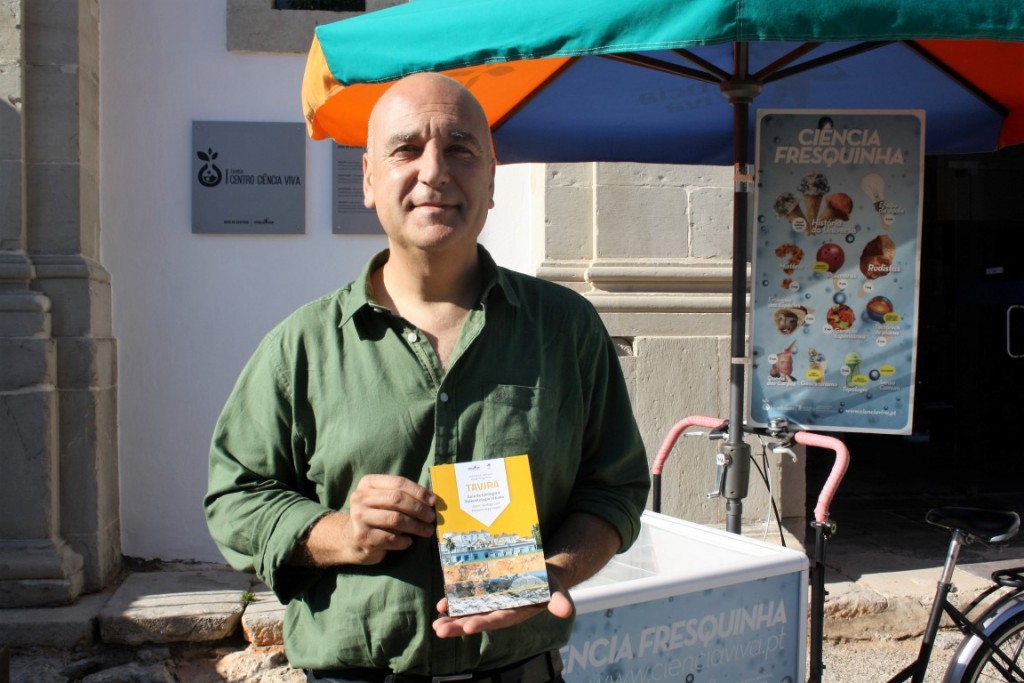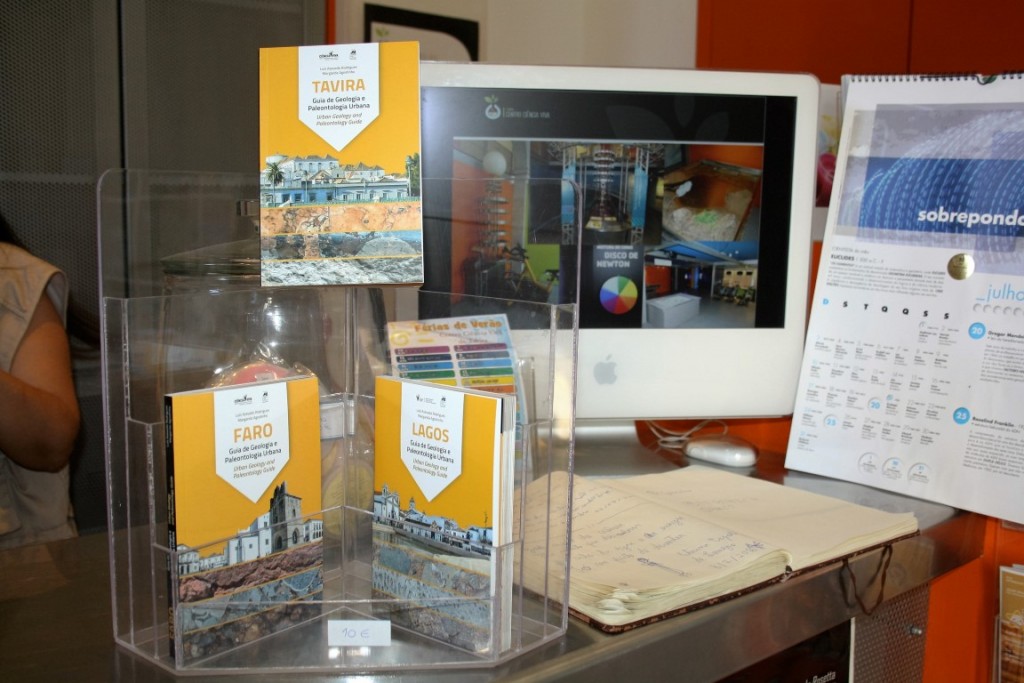 Anyone who wants an excuse to look for beings that (already) do not exist in monuments and elsewhere in Tavira doesn't need a game, not even a smartphone or a tablet. Just get the Geology and Urban Paleontology Guide from the Centro de Ciência Viva and set out to discover fossils, rocks that are billions of years old and other curiosities.
Anyone who wants an excuse to look for beings that (already) do not exist in monuments and elsewhere in Tavira doesn't need a game, not even a smartphone or a tablet. Just get the Geology and Urban Paleontology Guide from the Centro de Ciência Viva and set out to discover fossils, rocks that are billions of years old and other curiosities.
the second of three guides on the geological and paleontological wealth of Algarve cities which have Live Science Centers – Lagos, Tavira and Faro – was released last week. The publication about Tavira, which followed the one about Lagos and precedes that of Faro, whose official presentation should take place later this month, reveals a side of this town full of points of interest that easily escape the untrained eye.
Be it the 1600-million-year-old counter of a modern café, the fossils that abound in stones in churches and other heritage elements, pillars that seem to be damaged, but which are, after all, anyway source, and a stone that traveled thousands of kilometers to support a pulpit in a temple in Tavir, there are many curiosities revealed in the guide written by Luís Azevedo Rodrigues and Margarida Agostinho, with the help of historian Rita Manteigas.
 as with the app of the moment, also the Urban Geology and Paleontology Guide can cause dependency and change the way we behave when we enter any monument. «Rita Manteigas told me that, after having been doing this work, whenever she enters a church, the first thing she does is look at the floor and walls, to see if she can find fossils», revealed Luís Azevedo Rodrigues , who was at the Centro de Ciência Viva de Tavira to present the guide last week.
as with the app of the moment, also the Urban Geology and Paleontology Guide can cause dependency and change the way we behave when we enter any monument. «Rita Manteigas told me that, after having been doing this work, whenever she enters a church, the first thing she does is look at the floor and walls, to see if she can find fossils», revealed Luís Azevedo Rodrigues , who was at the Centro de Ciência Viva de Tavira to present the guide last week.
The paleontologist, who is also the director of the Lagos Living Science Center, spoke with the Sul Informação and explained what was intended with the release of the three guides.
«These books, which were published in Portuguese and English, survey rocks and fossils that are often present in them, in an urban context. It can be on a counter top, like the one we saw in a relatively new cafe in Tavira, which was 1600 million years old, made of Finnish granite, or existing elements in buildings and constructions that are part of our daily lives, such as churches or squares. But always in a geological and paleontological context», explained Luís Azevedo Rodrigues.
The guide allows anyone to see the public space with new eyes. “We often pass on the sidewalks and don't look at the type of rock that composes them, we go to churches and focus on architectural aspects. But this architecture is based on rocks that came from somewhere, have a geological history and often have the remains of living beings from millions of years ago», he added.
It can, in this way, be a good teaching tool, but it is also ideal for those who visit Lagos, Tavira and Faro, who can get to know other facets of the city, with a scientific framework, without losing the historical framework, given by the texts of Rita Manteigas.
«Basically, we wanted to open people's eyes to another type of knowledge, so that they can enjoy cities in a more complete way», said Luís Azevedo Rodrigues.
So, if you visit one of these places and see someone looking intently at the ground or with their face pressed against a wall, they are probably not looking for Pokémon, but rather for fossils or other geological and paleontological curiosities.


















Comments